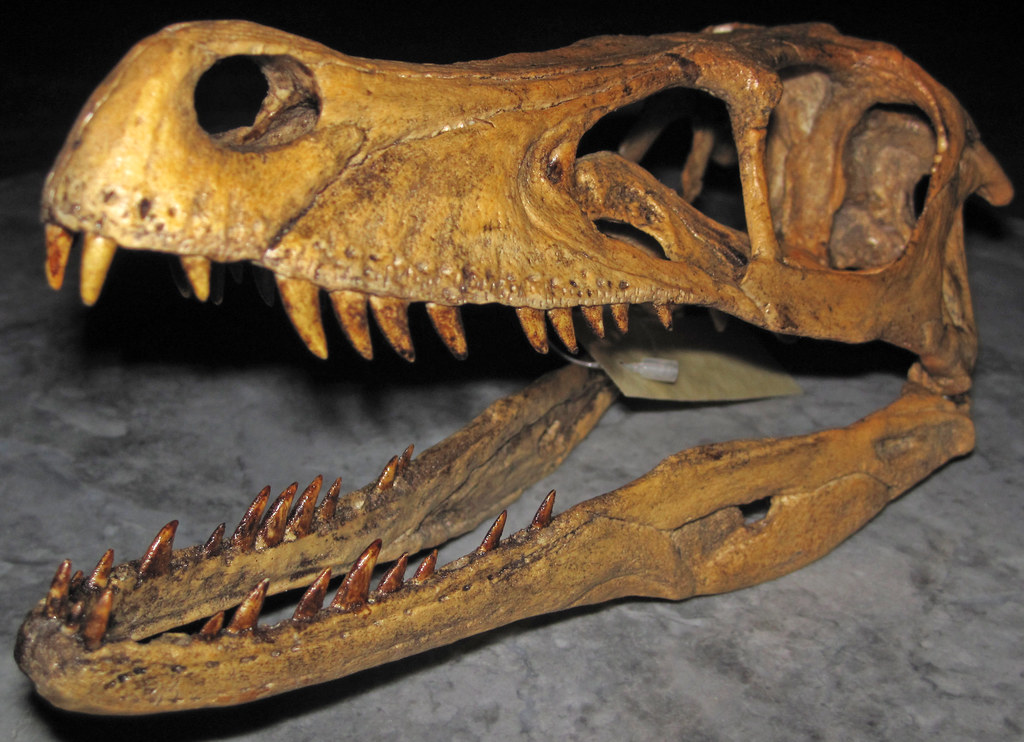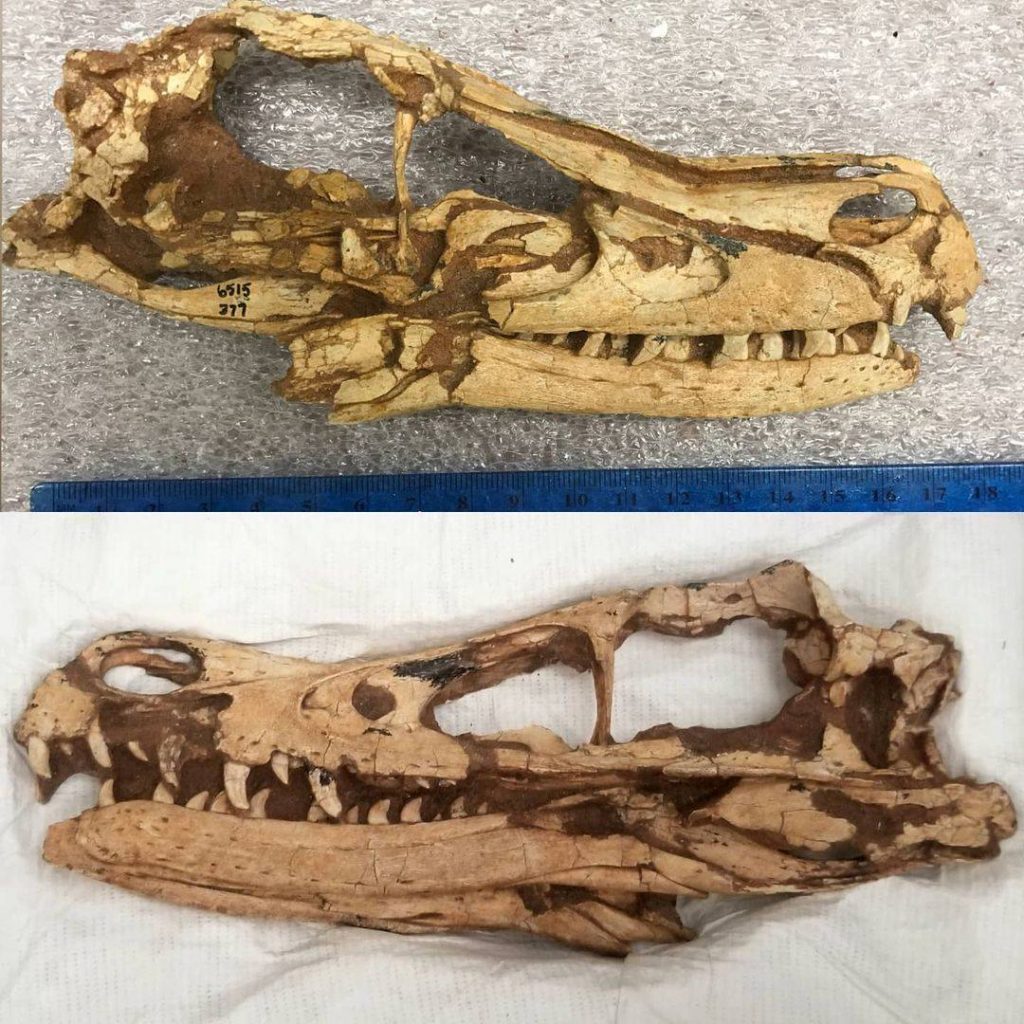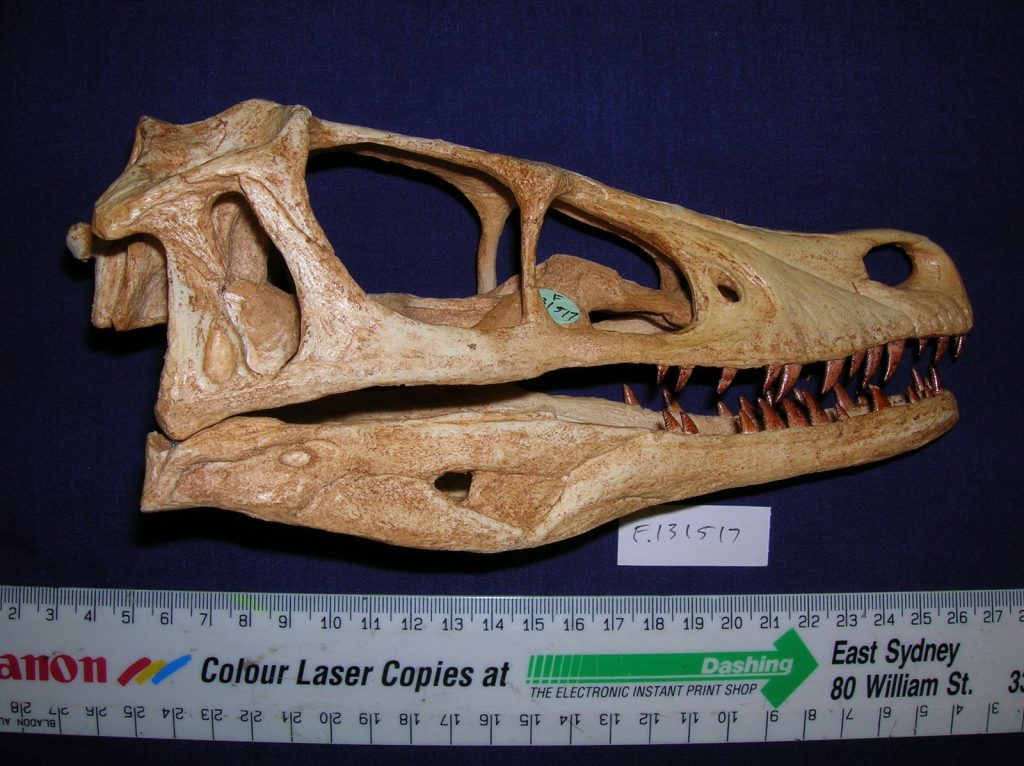Velociraptor Skull Exhibit at American Museum

Nestled within the halls of the American Museum of Natural History in New York lies a relic from the distant past—a skull belonging to Velociraptor mongoliensis, a formidable mid-sized dromaeosaurid dinosaur that once roamed the ancient landscapes of Mongolia. This fossil specimen, designated AMNH 6515, serves as a captivating window into the world of prehistoric predators and offers invaluable insights into the biology and behavior of these fascinating creatures.

Velociraptor mongoliensis, commonly referred to as Velociraptor, is a species of theropod dinosaur renowned for its agile movements, razor-sharp claws, and predatory instincts. Adults of this species typically measured up to 2.07 meters in length, stood around 0.5 meters high at the hip, and weighed up to 15 kilograms, although some estimates suggest weights as high as 19.7 kilograms. These measurements, combined with its sleek, bird-like form, make Velociraptor an iconic representation of the dinosaurian world.
The skull of Velociraptor mongoliensis, on display at the American Museum of Natural History, provides scientists and visitors alike with a tangible connection to the distant past. With its elongated snout, rows of serrated teeth, and distinctive cranial features, the skull offers clues about the feeding habits, sensory capabilities, and social behavior of this ancient predator. By studying the size, shape, and arrangement of the skull bones, paleontologists can reconstruct the anatomy of Velociraptor and gain insights into its evolutionary relationships with other theropod dinosaurs.

Velociraptor mongoliensis is known from the late Campanian stage of the Cretaceous period, approximately 73 million years ago. During this time, the landscape of Mongolia was vastly different from what it is today, characterized by lush forests, winding rivers, and diverse ecosystems teeming with life. Velociraptor likely inhabited these ancient environments, stalking its prey through dense vegetation and employing its keen senses to detect and capture unsuspecting prey.
The discovery and study of Velociraptor mongoliensis have greatly enriched our understanding of dinosaurian biology and evolution. From its distinctive anatomy to its behavior and ecology, Velociraptor continues to fascinate and captivate both scientists and the general public alike. By examining specimens like the skull housed at the American Museum of Natural History, researchers can piece together the intricate puzzle of prehistoric life and gain a deeper appreciation for the wonders of evolution.

Moreover, the skull of Velociraptor mongoliensis serves as a symbol of the importance of museums and scientific institutions in preserving and interpreting our planet’s natural history. By providing access to fossil specimens and educational exhibits, museums play a crucial role in promoting scientific literacy and inspiring curiosity about the world around us. The skull of Velociraptor, displayed prominently within the halls of the American Museum of Natural History, serves as a tangible reminder of the wonders of the natural world and the enduring legacy of Earth’s ancient inhabitants.
In conclusion, the skull of Velociraptor mongoliensis, housed at the American Museum of Natural History in New York, stands as a testament to the richness and diversity of life that once inhabited our planet. By studying this fossil specimen, scientists and visitors alike can unlock the secrets of the past and gain a deeper understanding of the evolutionary forces that have shaped life on Earth. As we marvel at the intricacies of Velociraptor’s skull, we are reminded of the profound connections that bind us to the natural world and the importance of preserving our planet’s rich biological heritage for future generations to explore and enjoy.